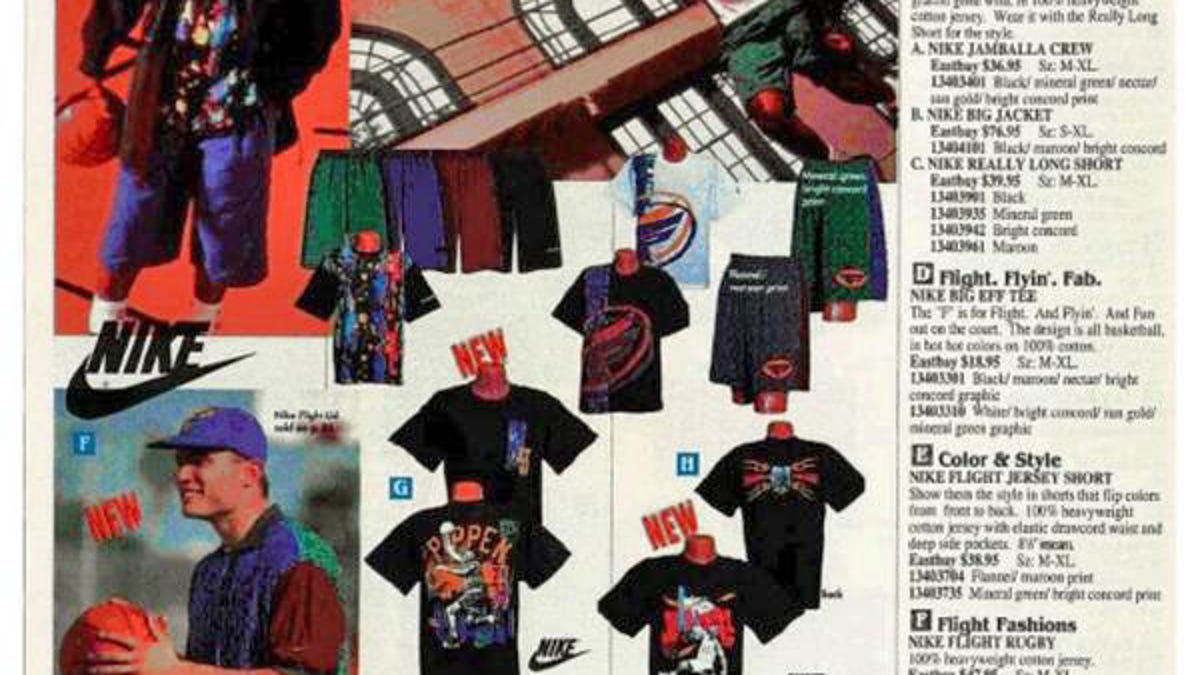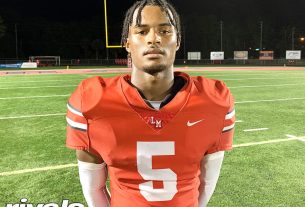
As an unemployed 12-year-old with homework, no driver’s license, and being required to ask a parent/guardian for permission to leave the home, shopping at the mall was a luxury.
In order to get a blue Orlando Magic Tracy McGrady jersey, a pair of A5s, or a Yankees’ fitted cap, the choices were to wait for Christmas or a birthday, shovel some snow, cut grass, or help the elderly with their groceries. While waiting for a present, or a single $5 bill to multiply into many, the next best thing to actually wearing the gear from your favorite athletes, was an Eastbay catalog.

It was one of the first tools that made the mall less of a necessity. There was no need to ask for a ride, or gather the crew to walk around Finish Line and Foot Locker knowing that no one was going to make a purchase. Window shopping could be done in the bedroom, or outside on the stoop.
The shoes, jerseys, caps, sweatsuits, were all inside those pages to be perused at any time. That included new releases that hadn’t yet arrived in the stores. The desired item might not have been ordered straight out of the catalog, but it allowed a young person to get a head start on saving. A new Eastbay catalog included pictures of all of the most current apparel along with prices.
Young people could make plans on how to buy a favorite item or do the next best thing — fantasize. A flip through those pages and someone could feel like Will Smith on the “Fresh Prince of Bel-Air.” A gleaming Air Jordan sweatsuit with a Chicago White Sox cap and MJ’s newest released shoe, all of sudden there was a new Fresh Prince in town — in the mind of the person looking through the catalog.
The magazine even had a way to outfit basketball teams all in the same shoe. There was a featured Nike, as well as a DADA Supreme shoe, that could be ordered in virtually any color combination. Whether or not the team could actually hoop, at least they could all look like ballers when they ripped off their sweatpants at the scorers’ table.
Eastbay was a product that was more about the journey than the destination. Wearing something nice and new feels great, but there is a limit to it. Most people can only afford to own so many jerseys and pairs of shoes.
But once that catalog was pulled out of the mailbox, looking through those pages could make young people feel like 20 pages of apparel were in their closet. It was a pause from the reality of limited resources. A fantasy world in which the only decision to be made is which color. Wait, this is a fantasy. Get all four colorways. Show up at school with the red and black on Monday, and the blue and gray on Tuesday. Stunt on everybody, teachers included.

I won’t go as far as Nigel did in “The Devil Wears Prada,” when he referred to the fictional Runway Magazine as a “shining beacon of hope,” but the catalog was more than simply a way to order clothes, shoes, and sporting equipment.
It was a way for young people into sports and pop culture to have their own book of style. They may never have Will or Jerry Seinfeld’s shoe closet, but at least there was a way for them to see all the pairs they would ever want in one place.
Nowadays people can simply just print out the items they want, however large of an image they desire, and put it on a vision board, or even make a virtual one on Pinterest. Combine that with Amazon’s swift delivery, and popular sneakers only available at retail price through an app that rejects attempts like Jaren Jackson Jr., Eastbay became antiquated. These days a mobile alert informs people of the upcoming Air Jordan release dates.
Sure Eastbay hasn’t been practical for many years, but for the kids of the 1990s and 2000s, it was always a good day when one of those catalogs arrived in the mail. A flip through those pages and you too could imagine the perfect fit for walking through an NBA tunnel or an interview with Carson Daly.
The best way to window shop with limitations financial and otherwise.



